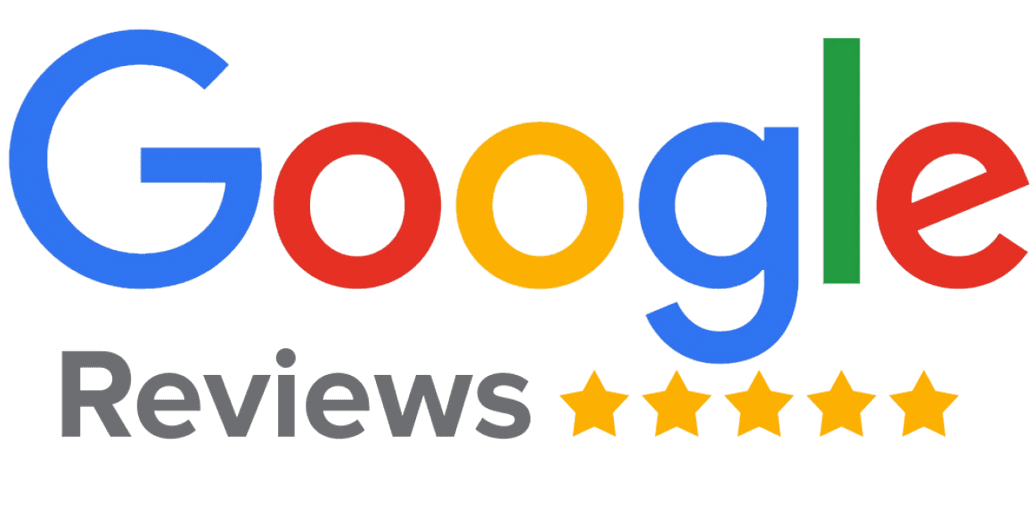Biggest SEO Mistakes To Avoid
Content marketers have to put in days, even weeks, of hard work and time to prepare content. However, it can be disheartening for a content marketer if the content doesn’t rank in the search engine. If it has happened to you, you understand that it’s not a very good feeling, to say the least. Marketers create content to reach their target audiences and anyone else searching for it.
Many marketers and business owners fail to get results from their search engine optimization efforts because of falling prey to common SEO mistakes. SEO is one of those strategies that you can implement in a few weeks, but it takes time to master. The first five organic results account for 71% of all clicks on searc engines. If you want to compete for high-traffic words and phrases, there are a few mistakes that you must avoid so that you can get that first-page ranking.
Here are the most common SEO mistakes you need to avoid to keep your digital marketing strategy intact.
Failure To Set Goals
It is no surprise that you need clear goals to succeed with SEO. Many business owners and marketers ignore this and run SEO campaigns without goals. They believe that SEO will increase their traffic, and subsequently their sales. The problem is, things are not always quite that simple.
For your SEO efforts to pay off, you need to understand what you want to achieve. Is it better quality traffic, more organic leads, or more sales you’re trying to get? Failure to set your priorities straight from the beginning is like starting a journey without knowing your destination.
For example, you may be attracting thousands of monthly organic users to your website, but only 1% of them end up buying from you. In this case, you’re either driving the wrong traffic to your website, or your website is not effective enough in converting visitors into customers. Without clear goals, you’ll end up with a bunch of vanity metrics and not much else.
Not Using Analytics
SEO isn’t only about massive amounts of free traffic. It’s also about converting the traffic. You may easily get caught up watching which phrases are sending you the most traffic, and then get bummed when you can’t rank for those super-competitive, high-traffic keywords. But traffic isn’t all that matters. Sometimes, lower-traffic phrases will convert better because they’re more specific, and getting first page rankings for several of them can drive sales remarkably.
The only way to find out if your efforts are paying off is to track it. Use an analytics package to set up conversion tracking for your keyword phrases, and then compare them against each other to see what’s producing the best results. Google Analytics is used by 56.8% of all websites to track their progress and know what is holding them back. Knowing will help you better optimize your site as a whole and know which efforts are worth focusing on and which ones you should let go of.
Optimizing For The Wrong Keywords
Selecting and using the wrong keywords is one of the most common mistakes when creating content. For example, it’s easy to fall into the trap of optimizing for global keywords when you only offer services to local customers.
As you create content, it’s best to be as specific as possible. Sometimes you’re better off going for more specific phrases, which lead to quicker rankings and more qualified traffic. Other keywords to avoid are those that only bring in visitors looking for free information, not prospective customers interested in buying something.
Beginners tend to make the mistake of using broad keywords that have lots of competition, maybe with several SEO experts working full-time to defend the first-page ranking. 71% of marketers say using strategic and specific keywords was their number one strategy for SEO. Start with keywords that would probably start producing results immediately. You could then optimize for more competitive keywords as your website grows and gains authority.
Writing Poor Content
People online are searching for informative and quality content that matches their queries. But still, we come across websites that write very poorly written content for the readers. Irrelevant content with ordinary writings standards only harms your rankings.
The two most popular ways of creating a large quantity of content are hiring low paid article writers and using article spinners, software that takes one article and re-words it to make it look like several unique articles to search engines. The content might be well optimized, but you also need to consider the impression it’ll give visitors. Search engines, and more importantly, people can tell whether or not content is unique. If it’s not, you’ll lose trust, and you’ll have a much harder time regaining it.
Quality content has consistently been a factor toward gaining traffic and ranking for your site. Search engines have their users’ best interests at heart, so if your content is below standards or irrelevant, it simply won’t rank.
Poor Use Of Links
To get the best out of SEO, it is essential to include quality external links in the content. Always make sure your external links are from a relevant, high-ranked website with a higher Domain Authority. While there are many easy ways to get a high volume of links, you should emphasise quality.
One link from a popular blog might do more for your search engine rankings than thousands of low-quality directory links. Yes, they’re harder to get, but that’s also why search engines place such trust in them. Link building is one of the two most important signals that Google uses to rank your website for search. They are a more reliable measure of the quality of your website.
Using a call to action, like ‘click here, as your link costs you the opportunity of tailoring your anchor text. However, avoid using similar anchor texts every time you link to a page. It looks funny to visitors and can hurt your search engine rankings. Mix it up and use variations of the phrase. It will look more natural to site visitors and search engines.
At Clickslice, we offer extensive link building services to help you grow your traffic and rank higher on Search Engine Results Pages.
How do I Get More Customers for My Carpet Cleaning Business?
Once you have established a base of core clients for your carpet cleaning business it can often be difficult to expand and get new customers consistently. Typical methods like word of mouth and customer referrals are brilliant but to really get ahead you need to tap into the online world and use the wealth of available marketing tools.
If you are ready to grow your business and take on more work, we use our experience and knowledge to list five simple ways you can attract more customers below.
1. Get Customer Reviews on Sites Like Trust Pilot
When I’m looking for a service or business to use, I ALWAYS take into consideration reviews. Knowing that there are other real people that have used the company and are satisfied with the end results is incredibly important. It’s a great idea, therefore, to sign up to review sites and ask that your customers leave reviews once they have used your carpet cleaning service. Notable examples include Trust Pilot, Yelp, and Google Customer Reviews.
Once the reviews start flooding in, make sure that you take the time to reply to them and thank people, but also address any concerns or areas for improvement that may be mentioned. If people see you are active and read the reviews they can see that you genuinely care and want to strive for perfection.
2. Create Business Profiles on Directories
Following on from the above you should also list your carpet cleaning company on online business directories. Many people use these to search for services in their local area instead of using Google Search.
Yell.com is a primary example but we also advise checking if there are any local business directories in your area. Google Business Profile is also a must and this will give your carpet cleaning business a nice pop-up page when people find your company on Google searches.
With all directories make sure that you make the profiles as detailed as possible and include links to your website and social media profiles if possible. Also include the industries you cover, and the type of carpet cleaning you provide.
3. Consider Focusing on a Cleaning Niche
Oftentimes carpet cleaning businesses can try and appeal to a too broader audience with their marketing strategies. While this can work and attract new customers, it could also be beneficial to look at carpet cleaning niches for specific industries.
For example, you may want to try and market your business for commercial cleaning, or for residential properties. By using niche marketing you can tap into those customers who are searching directly for a specific service.
4. Stay Active on Social Media
Social media is a great way to increase your online presence and spread the word about the carpet cleaning services you offer. Just think of the millions of people who scroll endlessly through their social media feeds daily!
Platforms like Facebook and Instagram are also free to use so the only commodity needed for this marketing strategy is your time! You could even create social media posts when you are on the toilet! If you do decide to go down the social media route just make sure that your content is consistent, engaging, and useful to your customers.
5. Make Sure Your Website Has Excellent SEO
Your website is a prime marketing tool and using SEO for carpet cleaning will greatly boost website traffic, exposure, and hopefully click-through rates.
Search engine optimization is an entire process in its own right and this is one of the things that you may need professional help with. You can do some basic stuff though like researching keywords, and using site auditing tools like ahrefs site audit to see potential SEO problems with your carpet cleaning website.
Branch Out and Diversify Your Online Marketing to Reach New Customers
Online marketing can be incredibly effective for carpet cleaning businesses and the effort involved is half as much compared to using traditional offline methods. You don’t even need to have any web development or marketing experience to do most of these processes so why not give them a try and bring in new customers for your carpet cleaning business?

Joshua George is the founder of ClickSlice, an SEO Agency based in London, UK.
He has eight years of experience as an SEO Consultant and was recently hired by the UK government for SEO training. Joshua also owns the best-selling SEO course on Udemy, and has taught SEO to over 100,000 students.
His work has been featured in Forbes, Entrepreneur, AgencyAnalytics, Wix and lots more other reputable publications.
A Guide to Digital Marketing for Photographers
Many photographers simply rely on word of mouth or their website to promote their services. This can be effective and a great source of work but the best photographers know how to use digital marketing to their advantage to keep the clients flowing.
In this guide we show you six simple steps that allow you to transform your photography business and take your digital marketing to the next level.

Step 1 - Know your customers
- Many photographers fall short with digital marketing because they try to appeal to a broad audience and never consider their target customers.
- Before doing anything like creating social media profiles or researching keywords, take time to find your niche.
- What type of person actually needs your services? Are you a wedding photographer who needs to target young couples? Perhaps you specialize in family portraits or landscape photography? Dissect your business and identify your main customers and from there you can create a more targeted digital marketing campaign.
Step 2 - Understand how your business works
With your target customer identified, think about how your business works. What do you do? Do you simply sell the rights to your photos? Maybe you have an online store where people can buy canvas prints and framed photos?
Knowing how your business works and how customers interact with you is vital so that you can promote things like online stores or contact methods effectively.

Step 3 - Choose relevant marketing strategies
You now know who your customers are and you understand what they give you money for – perfect. It’s time to choose your initial digital marketing strategies and potential examples include:
– Social media marketing
– Email marketing
– SEO
– Content marketing
You should be able to choose easily as you now have an in-depth understanding of your customers. If you specialize in wedding photography for example in a particular location you may want to concentrate on SEO and ranking for local keywords.
Start with one or two marketing strategies so as to not overwhelm yourself and you can always develop more in the future.
Step 4 - Research keywords for your niche
Regardless of which strategies you use, your business can benefit from keyword research and this is a key aspect of SEO for photographers.
Let’s say that you are a family portrait photographer in London for example. You could use keyword research tools to find suitable phrases like “family photographer London”, or “portrait photography London”.
There are many tools available like Google Keyword Planner that make this task easier and help you identify keywords that aren’t as competitive or that suit your photography niche.
Step 5 - Create interesting, unique, and SEO-optimized content
You have a better understanding of your business combined with a list of keywords and a handful of marketing strategies ready.
It’s now time to produce content and start the marketing conveyor belt running. Regardless of the medium or method, the content must be unique, interesting, and useful to your target audience.
Make your awe-inspiring photography the focal point of your marketing so that your skills are immediately apparent. Create content regularly and make sure it promotes your business but at the same time gives people a reason to digest it.
Step 6 - Make sure your marketing has a consistent message
Throughout all of this, you must make sure that the message, tone, and quality of your digital marketing are consistent.
The aim is to build your online presence and boost your brand reputation so that people can see you as a trusted photographer. Use consistent brand messaging including fonts, colour schemes, and imagery. Also try to use a similar tone across all platforms like social media, blog posts, and email newsletters.
If your tone and content is fractured, your digital marketing will ultimately be less effective and your brand image diluted and this could give your competitors the edge – regardless of how incredible your photography is.
Digital marketing for photographers can be difficult but the important thing is to really sell yourself and show why a potential client should choose you over one of the hundreds of other local wannabees.
Let your epic photography show your skill, but also utilize SEO, keyword research and digital marketing to build your online presence and get consistent work.

Joshua George is the founder of ClickSlice, an SEO Agency based in London, UK.
He has eight years of experience as an SEO Consultant and was recently hired by the UK government for SEO training. Joshua also owns the best-selling SEO course on Udemy, and has taught SEO to over 100,000 students.
His work has been featured in Forbes, Entrepreneur, AgencyAnalytics, Wix and lots more other reputable publications.
What is Content Marketing and How Does it Help in SEO
Are you looking for new ways to improve your website’s search engine rankings and overall SEO? And has it crossed your mind that content marketing might be one possible solution?
SEO, together with content marketing, has changed the digital marketing world. If you’re serious about your SEO, content marketing should definitely be part of your SEO strategy. In this age, SEO without content marketing is like a body without a soul. To be successful, both must go hand in hand. During a 2021 Statista survey carried out among search engine optimization professionals worldwide, 24.6% stated depth and accuracy of content was among the most important factors impacting search rankings.
If you’re wondering if there are any benefits your SEO strategy can reap from content marketing, then you’re in the right place. In this post, what content marketing is, why it’s important for your SEO strategy.
But just before we jump into the interrelationship between SEO and content marketing, let’s look at what the terms actually mean.
What is SEO?
Search engine optimization(SEO) is the process by which a website is enhanced to perform better and rank higher in relevant searches. It is a technique of increasing the quality of traffic and attracting maximum visitors to your website.
What is Content Marketing?
On the other hand, content marketing comes down to sharing valuable and relevant content with your audience. That is free content to assist them in solving their problems and understanding more about a topic they’re interested in. It is focused on using valuable and relevant content to drive profitable customer or client action.

How Does Content Marketing Work?
Content marketing offer readers and potential customers informative and useful material that provides insight and value. It utilizes blogs, social media posts, graphics and videos, to attract traffic, keep them engaged, and move them further along the sales funnel.
According to a study by the Contentmarketinginstitute, 76% of marketers employed a strategic approach to managing content in 2019. They used an approach that formalizes the processes that people and technologies needed to scale and deliver content. Most of these marketers attest to the effectiveness of content marketing to drive traffic to a site with the top goals being:
- To support the organization’s goals and criteria for success.
- Improving the customer experience.
- Generating and nurturing business leads.
Content marketing is a mainstay in the revolution from traditional methods of marketing. For example, a traditional ad may only tell the audience what an organization does, whereas content marketing shares relevant knowledge on the matter at hand and actionable insights that help the target audience to understand why they should take action.
How Content Marketing Works Together With SEO
Now let’s delve into some of the benefits of content marketing for SEO and learn the specific ways that an active content marketing plan can grant you an edge over your competitors in terms of search engine rankings.
Keyword Opportunities
Search engines can’t and don’t see websites like you and I do. We can always look at a website with pictures of pet supplies and understand that it’s an eCommerce site peddling leashes, dog bowls, and dog toys. However, search engines like Google have no way of recognizing a website’s purpose unless those words are written somewhere. And that is where content marketing comes in.
The key to SEO success is researching and finding relevant keywords then using them in your content so that you rank higher in the search engine results pages. Astute keywords mainly consist of one or two words. According to Ahrefs, 70.87% of keywords with more than 10,000 monthly searches consist of only one or two words. Using these keywords appropriately and following a strategic approach is fundamental if your content is to rank higher. For one, marketers should never stuff a page with keywords and overoptimize. SEO and content work in perfect balance.
Quality Content
Content marketing requires consistency. Fresh, unique and creative content gets rapidly indexed by search engines and ranks higher than low-value and monotonous content. In fact, according to Carolfoden, 78% of consumers will trust your brand if you create more customized content.
Your content must be able to lure your clients as well as solve a particular issue. As long as you can write influential content by using important keywords and targeting visitors, you are likely to improve on SEO and rank higher. Content quality is the most important factor through which Google determines the relevance of a page and ranks that piece of content. Content marketers brainstorm creative ideas and embed the most important keywords to get content acknowledgement. This is another sure way in which content marketing benefits SEO.
Content Keeps Users on Your Page Longer
If someone is redirected to your website from a search, they can’t find what they are looking for and then they leave right away, it is called a bounce. Usually, the percentage of people who do this on each page on your site is read as your bounce rate.
Google factors metrics like bounce rate into the overall SEO profile on your site. If one of your pages has a very high bounce rate, that’s clearly a sign that there is something wrong with it. According to Forbes, you and your business content have just seven seconds to make that first impression that will encourage users to stick around. Google certainly won’t want to continue ranking a page highly if it’s sending all its visitors right back into the search results.
Content marketing can help you combat a high bounce rate and solve problems like this, especially if it’s done thoughtfully. The longer a user stays on your site, the more they are likely to be converted into loyal brand ambassadors.
Having understood the ways that content marketing can improve your SEO, you may be looking to create a content marketing strategy that both helps your visitors and your site. That’s where we come in. At Clickslice, we are all about making your website obtain high rankings in search engine results. We can incorporate our SEO services with Content marketing to give you an edge over your competition both content wise and in search engine rankings.
Important Technical SEO Components to Consider
The race for higher rankings on Google’s first-page search results is a continuous game, so every marketer wants to take their SEO strategies up a notch frequently.
If applied well, some basic knowledge about the more technical side of SEO can often mean the difference between a high ranking site and a site that doesn’t rank at all. But what elements of technical SEO are the deciding factors of a successful website? Before we go into the elements, let’s take a look at what technical SEO is and what it does for your website.
What is Technical SEO?
Technical SEO implies optimizing your website by improving its technical aspects. This is done to help search engines understand your site content and possibly increase search engine ranking.
Technical SEO is part of on-page SEO, which focuses on improving elements on your website to get higher rankings.
Why is Technical SEO Important?
You apply SEO techniques to your digital marketing strategy primarily to drive traffic and earn money. Improving the website user experience (UX) will help you accomplish your objectives.
Technical SEO is not only there for search engine optimization but also to improve marketing tactics to boost your SEO goals. You need more working marketing tactics to succeed. But an on-point technical SEO makes everything else easier for you to handle.
Many marketers believe that they should focus on the technical details of a website just to please search engines. A website should be fast, clear, and easy to use for your users in the first place. Fortunately, creating a strong technical foundation for your website often coincides with a better experience for both users and search engines.
Now let’s take a look at some important aspects of Technical SEO.
Speed
Nowadays, there is no let-off for having a slow website. Most people on the internet are impatient and don’t have time to wait for a page to open. Research by Marketingdive shows that 53% of mobile website visitors will leave if a webpage doesn’t open within three seconds. Such a short time!
If your website is slow, people are more likely to get frustrated waiting for content to load. They’ll eventually move on to another website that will load faster, and you’ll miss out on all that traffic.
Even Google Search Console picks up blogs with good website speed for ranking. Search engines know that slow web pages offer a less than optimal experience. So, a slow web page also ends up further down the search results than its faster equivalent, resulting in even less traffic.
If the bounce rate of your blog or website is high due to slow loading time, it can create a negative impact on the ranking as well. Imagine all the time you have spent creating that sumptuous piece of content, just to be let down by your site speed. It’s definitely not worth it.
Search Engine Crawlability
Search engines use robots to crawl or spider your website before they index it. Web crawlers usually draw on XML sitemaps to identify the web pages that should be indexed. Failing to keep a tidy sitemap makes it harder for crawlers to reach all pages on your website.
Search engines don’t rank web pages that they cannot access. A great internal linking structure will make sure that they’ll understand what the most important content on your site is. If the search bots are unable to crawl and find your website, then you must check for crawl errors. They create trouble for the site in its appearance on the SERP.
These technical errors mean that the audience might be unable to reach your website. Additionally, if there are any crawl errors, a user who typed a search query cannot find the information on the search results.
No Duplicated Content
Having the same content on multiple pages or other sites leaves search engines confused. If these pages show the same content, which one should they rank highest? As a result, sites with duplicated content might be ranked lower.
Unfortunately, sometimes you might have an issue with duplicate content without your knowledge. Due to technical reasons, different URLs can end up showing the same content. For a visitor, this doesn’t make any difference, but for search engines it does. They’ll see the same content on a different URL.
Luckily, the technical solution to this issue is readily available. With the so-called canonical link element, you can indicate what the original page or the page you’d like to rank in the search engines is.
And, to make it easy for you, self-referencing canonical links to all your pages are always a welcome boost. This will help prevent duplicate content issues that you’d might not even be aware of.
Website Security
One critical ingredient in Google ranking is website security. HTTPS is the etiquette where information goes through web browsers and websites securely. The HTTPS protocol is designed to protect web users from man-in-the-middle attacks.
It makes sure that no one can intercept the data that’s sent between the browser and the site and acquire the information for any purpose. This means that if people must log in to your site, their credentials are safe. To implement HTTPS on your site, you’ll need an SSL certificate.
Google is committed to protecting its users, this is why it made HTTPS a ranking signal. As you can imagine, secure websites rank higher than unsafe equivalents.
But how can you check if your website is HTTPS in most browsers? It’s easy, on the left-hand side of your browser’s search bar, you’ll see a lock if it’s safe. If it’s not safe, you’ll see the words “not secure.” This means that you and your developer have some work to do!
Generally, a technically optimized website is a secure website.
Meta Descriptions and Tags
Metadata is an important structural consideration and it also affects how crawlers interpret your webpage. A meta description makes it clear to a crawler what the title and content of a page are, along with what description should be displayed alongside the link to your site.
Optimizing title tags, Meta tags, and Meta descriptions for SEO is the key to success if you want to make your SEO strategy effective. Thorough keyword research and strategic placement of the keywords help in optimizing the meta description and tags.
Generally, search engines are continually evolving. At clickslice, we are devoted to keeping you up to date with all aspects of technical SEO so that your website is not left behind in top search engine results.
Top 10 SEO Mistakes by New Websites
Demands on SEO are growing every day, and so are the opportunities. Not only is the discipline expanding, so is the size of the market, which is predicted to reach $1.6 billion by 2027.
In recent years, SEO has evolved from being a siloed practice to a significant revenue channel that is being integrated into content marketing practices and overall digital strategies.
As you launch your site, you may decide that you’re going to stick with SEO for your primary traffic strategy, optimizing everything on your site in a bid to get search engines to give you a favourable ranking to generate traffic. So, you start by doing your keyword research and finding a few phrases that are bringing in massive amounts of traffic.
Now you expect your website to start climbing in search engine results. And it finally does, but not as fast as you’d wish it to. The next thing is you’ll start to ask yourself questions to try and figure out what’s going on, or what you may have done wrong.
Luckily, we have you covered. In this article, you will find ten mistakes that you are likely to make on a new website, together with their potential solution.
1. Looking Forward to a Quick Returns
It takes time for a new site to achieve the SEO results that they desire. This is mainly because site history is one of the website ranking factors considered by search engines, according to Yokellocal.
Internet marketers agree that SEO efforts can be measured between 6-9 months of a major push. To get your phone ringing while SEO ramps up, consider running Google PPC paid ads during the first several months that your website is online.
2. Not Knowing Your Audience
One of the fundamental base principles of SEO is to understand your target audience. That means knowing your consumers to the most minute and granular level. SEO is basically the voice of the customer.
Historical data is still a good method of giving SEO great insights into seasonal trends. However, marketers’ methods to understand their customers have to be more holistic than that.
To solve this issue, marketers should consider looking at the market from which the consumers mostly buy. Understanding the market is understanding the user.

3. Failure to Optimize for The Right Keywords
It’s easy to fall into the optimizing trap for global keywords when you only serve local customers or keywords that only bring in site visitors looking for free info and not looking to buy anything.
When it comes to SEO, it’s best to be as specific as possible. Focus on generic keywords to bring you a lot of traffic, if you’re successful. But how long will it take you, and how realistic is it? Sometimes, you’re better off going for more specific phrases, which usually lead to quicker rankings and more qualified traffic.
4. Having Duplicate Content
Large and small starting companies alike may go for duplicate content on their websites, and overlook it before posting. Duplicate content negatively affects SEO. It’s that plain and simple.
So what exactly is duplicate content? Duplicate content includes any form of matching content, pages and twin product listings across multiple pages. A study by Moz revealed that most people don’t create duplicate content intentionally and that up to 29% of the web is actually duplicate content!
If you often find this to be a problem as you start, there are a host of plagiarism tools online that you can use to check for duplicated content. Many are free and designed for revision and omission from a website.
5. Not Going For What Converts
Many beginners in the world of SEO tend to forget that it is not only about having free traffic on your site, but also converting site visitors.
It is easy to be distracted by watching phrases that send you traffic and forgetting about low traffic keywords. Often, these low-traffic keywords are in a better position to drive sales because they are more specific and appealing to the user.
To avoid making this mistake, you can employ the use of an analytics package to track conversion rates for your keyword phrases. You can then compare them against each other to see what’s producing the best results.
6. Failing to Optimize For Local Search
When you’re setting up a business that focuses on customers within a certain geographic region, it’s important to learn and understand everything that you can about local search. Most search engines, including Google, handle local search a bit differently than more global keywords.
You can start by including region-specific keywords in your page titles and meta descriptions. Then you might also want to include a physical address and a local phone number on your pages, such as in the header or footer so that you’ll show up in the local search results easier.
7. Slow Site Speed
When your site speed is low, it will deter people from trying to access content on your pages, and cost you hard-earned traffic. In the beginning, you have invested so much of your time and efforts to drive traffic from search engines but all that is a waste if the page takes too long to load.
Research by Backlinko suggested that the average time it takes to fully load a webpage is 10.3 seconds on desktop and 27.3 seconds on mobile. This shows that most sites have work to do when it comes to site speed. You can run your webpage through the Google PageSpeed Insights to check the performance of your page to help you understand more about your site’s speed.
The time between when users send a request to access your site, and when it is actually rendered is critical.
8. Poorly Written Content
At times, marketers lack time to create content for their sites, even when it’s new. The two popular ways of creating large amounts of content include hiring low paid article writers or using article spinners – software that takes one article and edits it using different to make it look like several unique articles.
This is however not a good idea, as search engines have become smarter with time. Even if not search engines, people can tell whether or not content is unique and valuable, and if it’s not, you’ll lose trust, and the audience won’t take action.
At clickslice, we have all the necessary SEO services to make your content unique and successful in Search Engine Result Pages.
9. Not Optimizing For Mobile
We are now living in a mobile-first world where most users rely on mobile devices rather than computers. A 2020 study by Perficient showed that 68.1% of all website visits came from mobile devices.
Having mobile-friendly websites will play to your advantage as you look to make your way up rankings. If you haven’t made use of this feature, then your site is also missing out on the most advanced types of design.
10. Not Taking Advantage of Great Link Designs
Hundreds of Cascading Style Sheets will link to your website simply based on having a great design. Additionally, you can look for blogs that do reviews of great website designs in particular industries and ask them to add your website to their list as well.
The high-quality links from these sites likely won’t convert, but they will have a positive impact on your domain authority.












